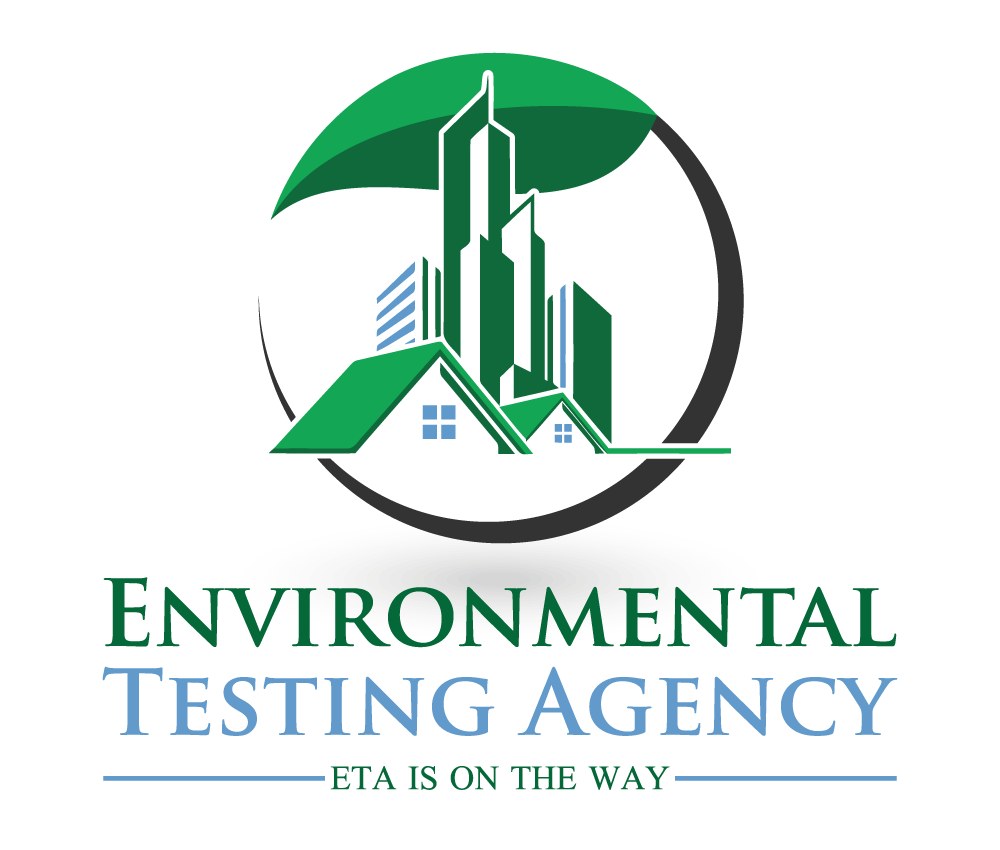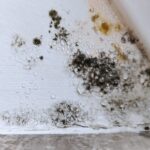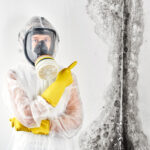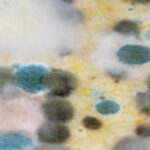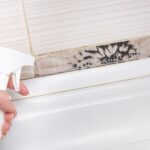Mold Growth in New Construction
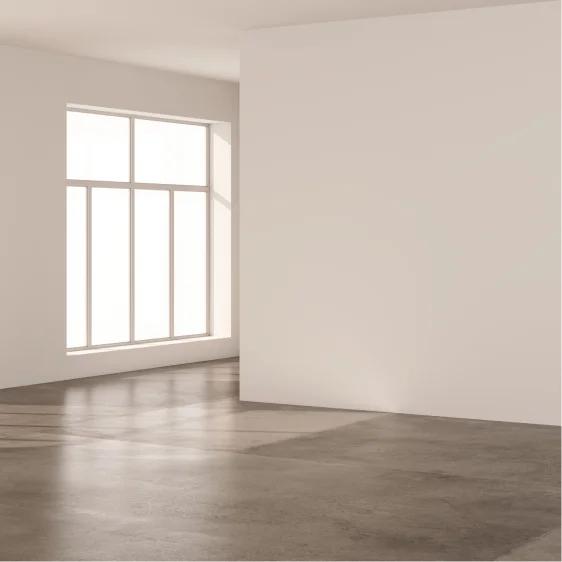
When you think about a brand-new home or commercial space, mold is probably the last thing on your mind. After all, everything’s fresh, clean, and untouched, right? It’s a common assumption that new construction is immune to mold growth, but unfortunately, that’s not always the case. Mold can still find its way into even the newest buildings, sometimes surprising new owners. Knowing that mold growth in new construction can be a concern is essential for protecting your investment from problems in the future.
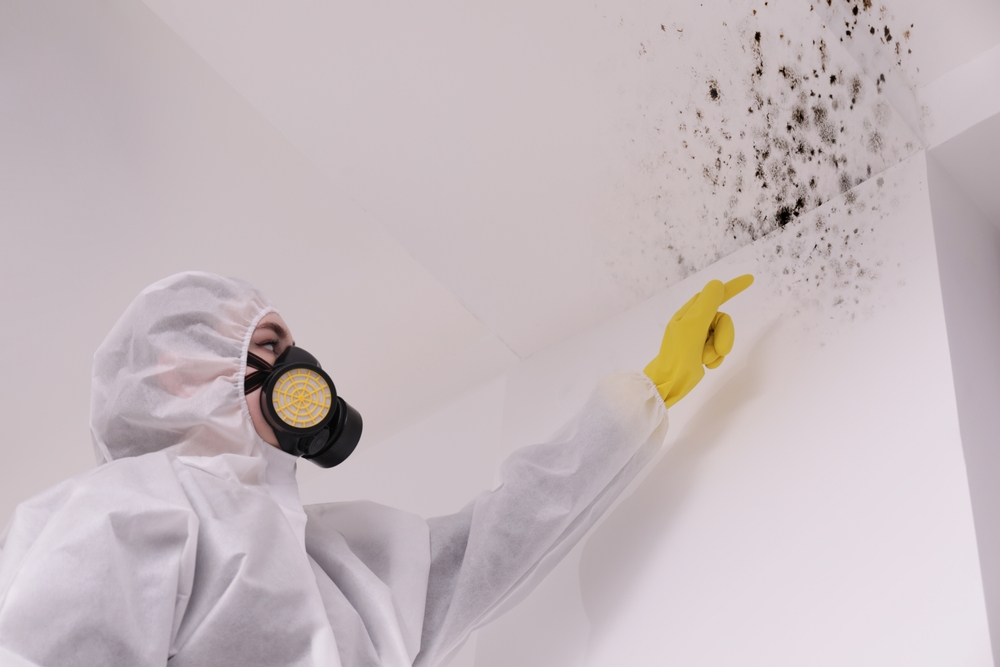
What is Mold?
Mold is a type of fungus that grows well in damp, dark environments. It starts from tiny spores that float in the air. When these spores land on a surface with the right conditions, like moisture and warmth, they begin to develop. Mold often looks like fuzzy or powdery patches and can come in various colors, including green, black, white, or gray. It might appear as spots, stains, or even a slimy film, depending on the surface and type of mold.
How Mold Affects Building Materials
Mold on Framing Lumber: Framing lumber is an essential part of a building’s structure, but it can easily develop mold if it gets wet. Leaks, high humidity, or improper storage can allow moisture to build up, creating a perfect environment for mold. You might notice dark spots or a fuzzy texture on the wood. This mold not only damages the wood but can also spread to other parts of the building if it isn’t addressed quickly.
Mold on Concrete: Concrete can also be affected by mold, especially in areas with high moisture, like basements or crawl spaces. If concrete isn’t properly sealed or has leaks, moisture can seep in and encourage mold growth. Mold on concrete often appears as dark spots or stains. Although it doesn’t penetrate deeply, it can release spores into the air, which might cause indoor air quality issues.
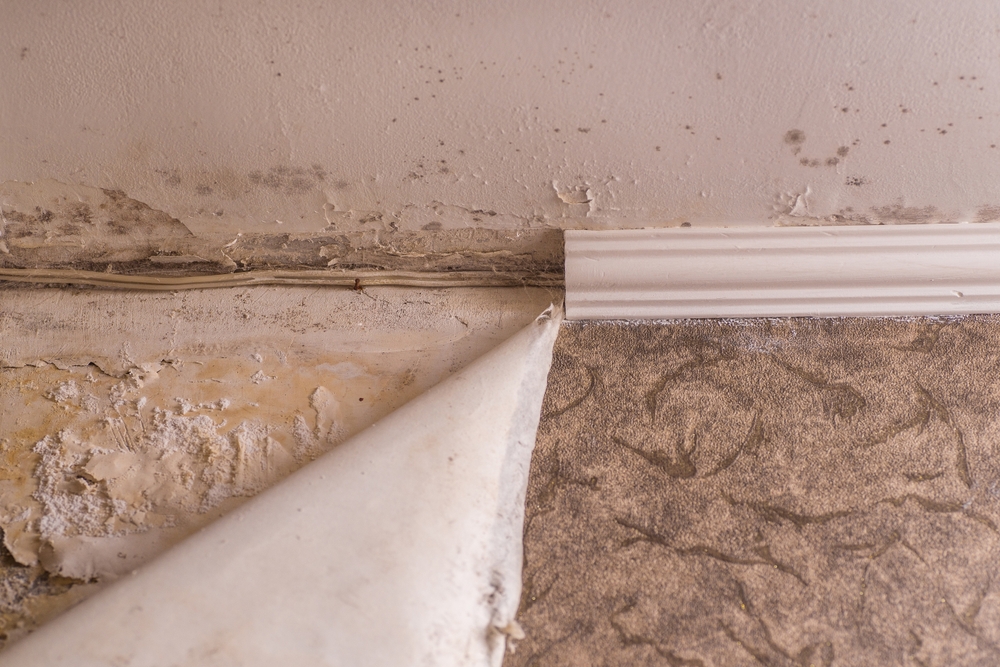
So, why does mold appear in new construction? Let’s look at some of the common reasons and factors that contribute to mold growth in newly built properties.
Why Mold Can Appear in New Construction
Even in a brand-new building, mold can sometimes become a problem. Here’s why this might happen:
Moisture During Construction: When a building is being built, materials like wood and drywall need to stay dry. If it rains a lot or if there’s high humidity during construction, these materials can get wet. Once the building is sealed up, this trapped moisture can create a perfect environment for mold to grow.
Improperly Stored Materials: Construction materials should be stored properly to avoid moisture. If drywall or lumber is left outside or in damp places, they can soak up water before being used. This moisture can lead to mold growth once the materials are installed, as the mold spores have already found a good spot.
Lack of Ventilation: New buildings often don’t have their full ventilation systems set up during the early stages of construction. Without good airflow, moisture from construction materials, human activity, or high humidity can get trapped inside. This stagnant moisture can cause mold growth, especially in damp and poorly ventilated areas.
Plumbing and HVAC Issues: Even new plumbing and HVAC systems can have problems. Leaks or condensation from these systems can create pockets of moisture inside walls or ceilings. If these issues aren’t quickly fixed, they can lead to mold growth in hidden spots.
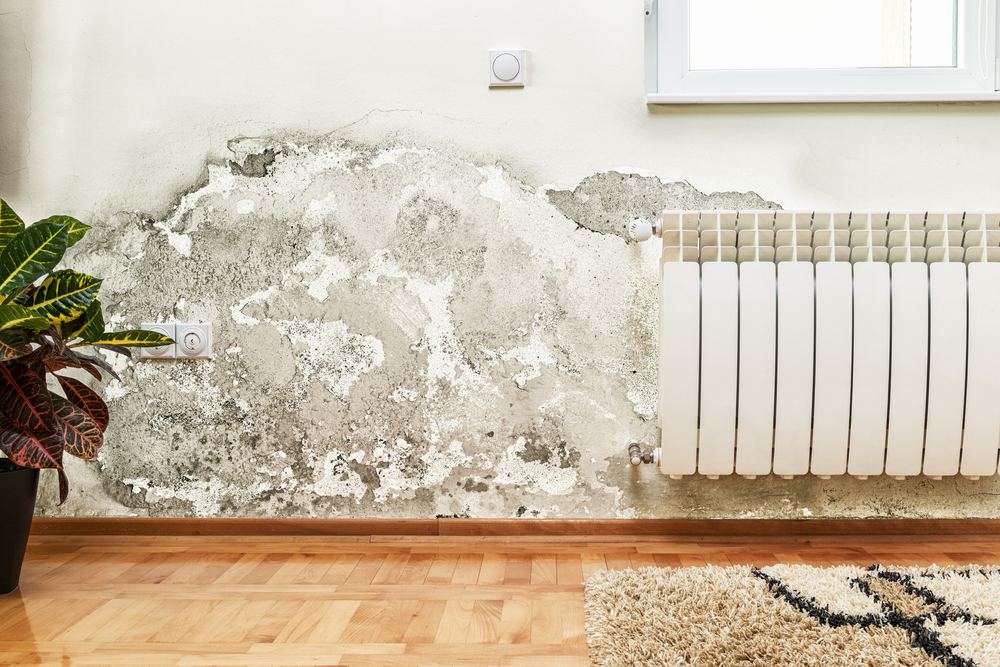
By understanding these factors, you can be more aware of mold risks and take steps to prevent them. Managing moisture, storing materials properly, and ensuring good ventilation are all important for keeping mold under control in new construction.
Common Areas Where Mold Can Grow in New Buildings
Even in brand-new buildings, mold can find its way into various areas, especially where moisture tends to linger. Here are some of the most common spots where mold might appear in newly constructed buildings:
Basements and Crawl Spaces: These areas are naturally more prone to moisture because they’re below ground. In a new building, water can seep in through small cracks or condensation can build up, making these spaces ideal for mold. Proper sealing and ventilation are crucial to prevent mold from taking hold early on.
Bathrooms: Bathrooms are especially vulnerable to mold because of constant exposure to water and humidity. In a new building, mold can develop around sinks, bathtubs, showers, and even behind tiles if moisture seeps into the walls. Ensuring good ventilation and regular cleaning can help keep mold from forming.
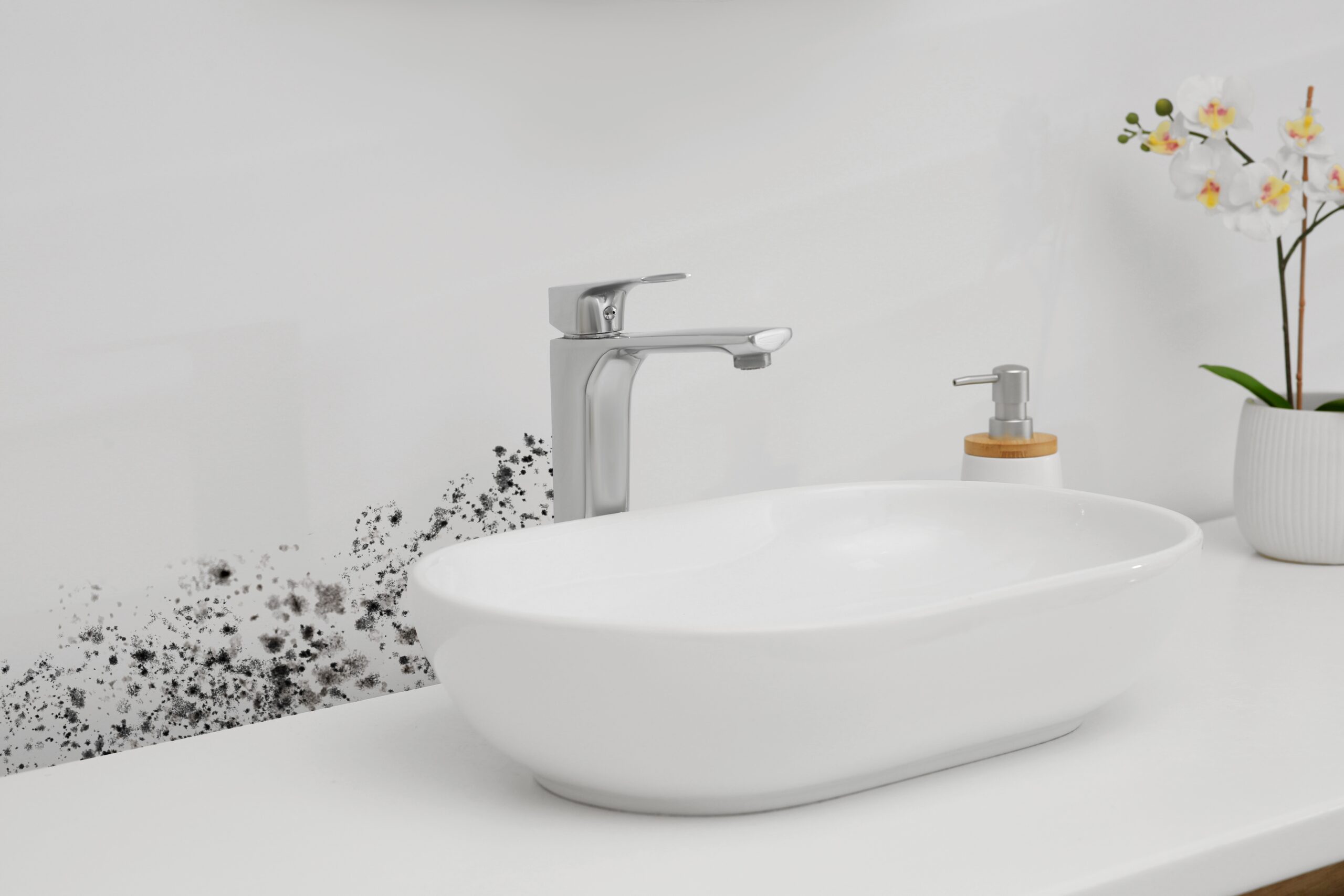
Kitchens: Like bathrooms, kitchens deal with a lot of moisture from sinks, dishwashers, and cooking. In newly constructed spaces, mold can grow under sinks, behind appliances, or anywhere water might leak or spill. Keeping these areas dry and fixing any leaks right away can help prevent mold.
HVAC Systems: Mold can sometimes grow in HVAC systems, even in new buildings, especially in ducts and around air conditioning units. If moisture builds up in these systems, it can spread mold spores throughout the entire building. Regular maintenance and cleaning of HVAC systems from the start are essential to avoid mold issues.
Attics: Poor ventilation and roof leaks in a new attic can create a moist environment, perfect for mold. Mold in the attic can be particularly tricky because it can go unnoticed for a long time, spreading and causing damage before anyone realizes it’s there.
Windows and Doors: Mold can grow around windows and doors, especially if there’s condensation or water leakage. In a new building, poorly sealed windows and doors can let moisture in, creating the ideal conditions for mold. Regularly checking seals and ensuring proper insulation from the beginning can help keep mold away.
Signs of Mold in New Construction
Spotting mold early can save you from bigger issues later. Here’s what to look out for in a new building:
Visible Growth: Sometimes, mold is visible to the naked eye. Look for dark spots or patches on walls, ceilings, and floors. Mold might appear as black, green, or even white fuzz, often in damp or dark areas. If you notice any unusual stains, it’s worth checking out.
Musty Odor: A persistent, musty smell is a common sign of hidden mold. Even if you don’t see mold, a musty smell can suggest it’s growing somewhere out of sight, like behind walls or under floors.
Allergy-Like Symptoms: If you or others in the building start experiencing symptoms like coughing, sneezing, or headaches, mold might be the cause. Mold spores can trigger these reactions, even if you can’t see the mold. If multiple people have these symptoms, it’s a good idea to check for mold.

Being aware of these signs can help you catch mold issues early, keeping your new construction healthier and safer.
The Damage Mold Can Cause If Not Inspected
If mold is ignored, it can cause serious damage over time, impacting both your building and the health of those inside. Here’s what can happen if mold isn’t taken care of promptly:
- Structural Damage: Mold feeds on materials like wood, drywall, and certain types of insulation. Over time, this can weaken the building’s structure. Wood may start to rot, drywall can crumble, and insulation might lose its effectiveness. If mold spreads deep enough, it can cause serious damage that could lead to costly repairs or even threaten the building’s safety.
- Health Problems: Long-term exposure to mold can cause health issues, particularly for people with allergies, asthma, or weakened immune systems. Mold spores can lead to respiratory problems, skin irritation, and symptoms like coughing, sneezing, and headaches. In severe cases, ongoing exposure to mold can result in chronic health conditions that are difficult to manage.
- Decreased Property Value: Buildings with mold problems are less appealing to buyers or tenants. Mold can leave stains and odors that are tough to get rid of, and its presence can be a major concern during inspections. Extensive mold damage can significantly lower a property’s value, making it harder to sell or rent.
- Increased Repair Costs: The longer mold goes unnoticed, the worse the damage becomes. What starts as a small issue can quickly turn into a major problem, leading to expensive repairs. Replacing damaged materials, treating mold-infested areas, and fixing the underlying moisture issues can all add up, leading to higher costs over time.
Regular inspections and quick action are essential to prevent mold from causing serious damage. Catching mold early helps protect your building, maintain its value, and ensure a safe and healthy environment for everyone inside.
Preventing Mold Growth in New Construction

Keeping mold out of your new building starts with taking the right steps. Here’s a straightforward guide to help you stay on top of mold prevention:
Control Moisture: Keeping things dry is important. Start by managing humidity inside the building. Use dehumidifiers and fix any leaks promptly. Ensure materials like wood and drywall stay dry from delivery through to the end of construction.
Ensure Good Ventilation: Good airflow helps remove excess moisture and keeps areas dry. Install and maintain ventilation systems in bathrooms, kitchens, and attics. Open windows and use exhaust fans to let fresh air in and keep things ventilated.
Inspect Regularly: Check the building often during and after construction. Look for signs of mold, like visible growth, water stains, or musty odors, especially in basements, attics, and around windows. Early detection helps prevent more significant issues later.
Use Mold-Resistant Materials:
- Mold-Resistant Drywall: This type of drywall is better at resisting moisture, reducing the chance of mold growth.
- Moisture-Resistant Insulation: Helps keep walls and ceilings dry and lowers the risk of mold.
- Treated Lumber and Paints: These are specially treated to resist mold and moisture, adding extra protection.
- Mold-Resistant Flooring: Opt for materials like tile or concrete. If you choose carpet, use mold-resistant padding to prevent moisture buildup.
Get Professional Help: Hiring experts for thorough inspections and mold prevention advice can make a big difference. They can identify potential problems you might miss and suggest effective solutions to keep your building mold-free.
What to Do If You Find Mold in New Construction
Finding mold in your new building can be concerning, but quick action can help prevent further problems and keep your environment healthy. Here’s what you should do:

- Act Quickly: If you spot mold, address it right away. Mold can spread fast, so the sooner you deal with it, the better. Start by stopping any sources of moisture, like leaks or high humidity, to prevent the mold from worsening.
- Get Professional Help: For a thorough inspection and accurate testing, reach out to us at ETA Mold. We have the expertise and tools to assess the extent of the mold problem, including hidden mold, and determine any potential health risks or structural damage.
- Mold Mitigation Steps:
- Contain the Area: To stop mold spores from spreading, seal off the affected space with plastic sheeting and use air filters to capture airborne spores.
- Remove Contaminated Materials: Carefully remove and dispose of any moldy materials, like drywall or insulation. Handle these materials carefully to avoid spreading mold spores.
- Clean and Disinfect: Thoroughly clean and disinfect the affected areas using specialized solutions designed to kill mold and prevent it from returning.
- Dry and Dehumidify: After cleaning, make sure the area is completely dried out. Use dehumidifiers and fans to remove any remaining moisture and prevent future mold growth.
- Remediation Steps:
- Assessment and Planning: We’ll assess the extent of the mold damage and develop a remediation plan to remove the mold and restore the affected areas safely.
- Removal and Treatment: Our team will remove contaminated materials and treat surfaces with mold-killing products to eliminate all traces of mold and prevent it from coming back.
- Restoration: After removing the mold, we’ll repair or replace any damaged materials, like drywall and insulation, to restore the area to its original condition.
By following these steps and working with us at ETA Mold, you can effectively manage mold issues and ensure your new construction remains safe and healthy.
Who Is Responsible for Mold in a New House?
Figuring out who is responsible for mold in a new house can be a bit tricky because both the builder and the homeowner have roles to play. Here’s a simple breakdown of what each party should do:
The Builder’s Role:
- Good Construction Practices: Builders need to use proper construction methods to prevent mold. This means making sure the building is well-sealed to keep out moisture, using quality materials that resist dampness, and having good drainage systems. They should also make sure the house can handle the local weather conditions.
- Mold-Resistant Materials: Builders should use materials designed to resist mold. This includes things like mold-resistant drywall and moisture-resistant insulation. By using these materials, builders can help prevent mold from developing in the new home.
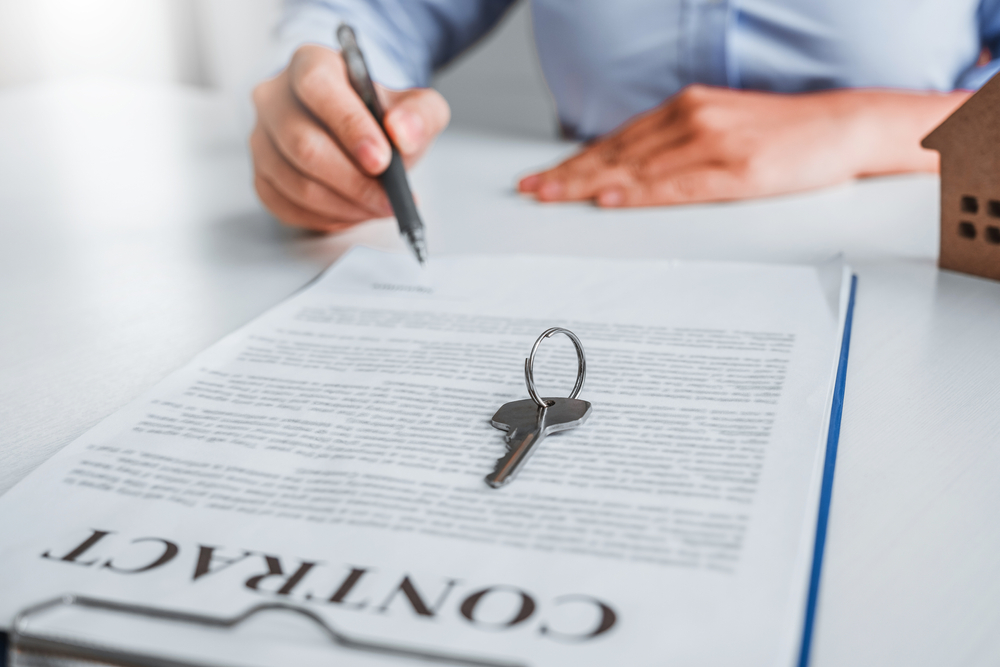
The Homeowner’s Role:
- Ventilation: Homeowners should make sure their homes are well-ventilated. This means using exhaust fans in the bathroom and kitchen, opening windows when possible, and keeping HVAC systems in good shape. Good ventilation helps control indoor humidity and prevent mold.
- Watch for Moisture: Homeowners need to keep an eye out for signs of moisture problems, like leaks or water stains. If any moisture issues are spotted, they should be fixed right away to stop mold from growing.
Builder’s Liability for Mold:
- Construction Issues: Builders might be responsible for mold if it’s caused by construction defects or poor workmanship. For example, if mold is due to improper installation of windows or roofing, the builder could be liable. Builders need to ensure that their work is free from defects that could lead to mold.
- Warranties and Contracts: Many builders offer warranties that cover certain issues, including mold from construction defects. Homeowners should check their contracts and warranties to see what’s covered. If mold issues are related to construction problems, the builder might need to address them according to the warranty terms.
The Importance of Checking for Mold in New Buildings
Even with new construction in Florida, it’s important to watch for mold, as it can hide in less visible areas. Regular inspections help catch issues early and prevent bigger problems. Taking early action protects health and preserves property value. Mold can lead to costly repairs, so addressing it promptly is essential.
Include professional mold inspections in your construction plan. Experts can find hidden molds and assess risks, giving you peace of mind.
For a mold-free new build in Florida, contact ETA Mold. Our team specializes in precise inspections and testing. It’s never too early to address mold concerns. Reach out today to schedule an inspection and protect your investment.
FAQs
Can mold grow in a newly built home?
Yes, mold can still appear in a new home. Even with a fresh build, issues like moisture during construction, poor ventilation, or gaps in sealing can lead to mold. Keep an eye out for any moisture problems and fix them quickly to prevent mold.
How can I tell if there’s mold in my new home?
Check for visible signs like discolored spots on walls, ceilings, or floors. A musty smell can also suggest hidden mold. If you or others are experiencing allergy-like symptoms such as coughing or sneezing, it could be due to mold. Regular inspections can help catch any problems early.
What are the common causes of mold growth in new construction?
Mold can be caused by moisture from leaks, high humidity, and poor ventilation. Construction flaws like badly sealed windows or roofs can let moisture in and create a mold-friendly environment.
Are there specific building materials that are more resistant to mold?
Yes, there are mold-resistant materials that can help prevent mold growth. These include special mold-resistant drywall, moisture-resistant insulation, treated lumber, and flooring options like tile or concrete.
What should I do if I find mold in my new home?
If you find mold, deal with the moisture source right away and contact professionals for an inspection. They can check how serious the problem is and suggest the best ways to safely remove the mold.
Who is responsible for mold issues in a new house?
Responsibility can vary. Builders should use good construction practices and mold-resistant materials. Homeowners need to maintain proper ventilation and address moisture problems. If mold is due to construction defects, the builder might be responsible under warranties or contracts.
How can I prevent mold growth in new construction?
Prevent mold by controlling moisture, using mold-resistant materials, keeping good ventilation, and doing regular inspections. Fix any moisture issues quickly to keep mold away.
How can I prevent mold in a newly built home?
To prevent mold, control moisture levels, and ensure good ventilation. Use mold-resistant materials like moisture-resistant drywall and insulation, and make sure your home has working exhaust fans in bathrooms and kitchens. Regular inspections and quick fixes for leaks or water issues can also help keep mold at bay.
What are the signs that a new construction project may have mold issues?
Look for visible mold growth or water stains on walls, ceilings, or floors, and be aware of a persistent musty smell. Watch for any unusual health symptoms among people living there, like coughing or sneezing, as these can also hint at hidden mold problems.
Can mold growth in new construction affect the resale value of the property?
Yes, mold can hurt the resale value of a property. It can cause structural damage, unpleasant smells, and health issues, which can turn off potential buyers and lower the property’s market value. Dealing with mold issues quickly and ensuring the property is mold-free can help keep its value and appeal.


